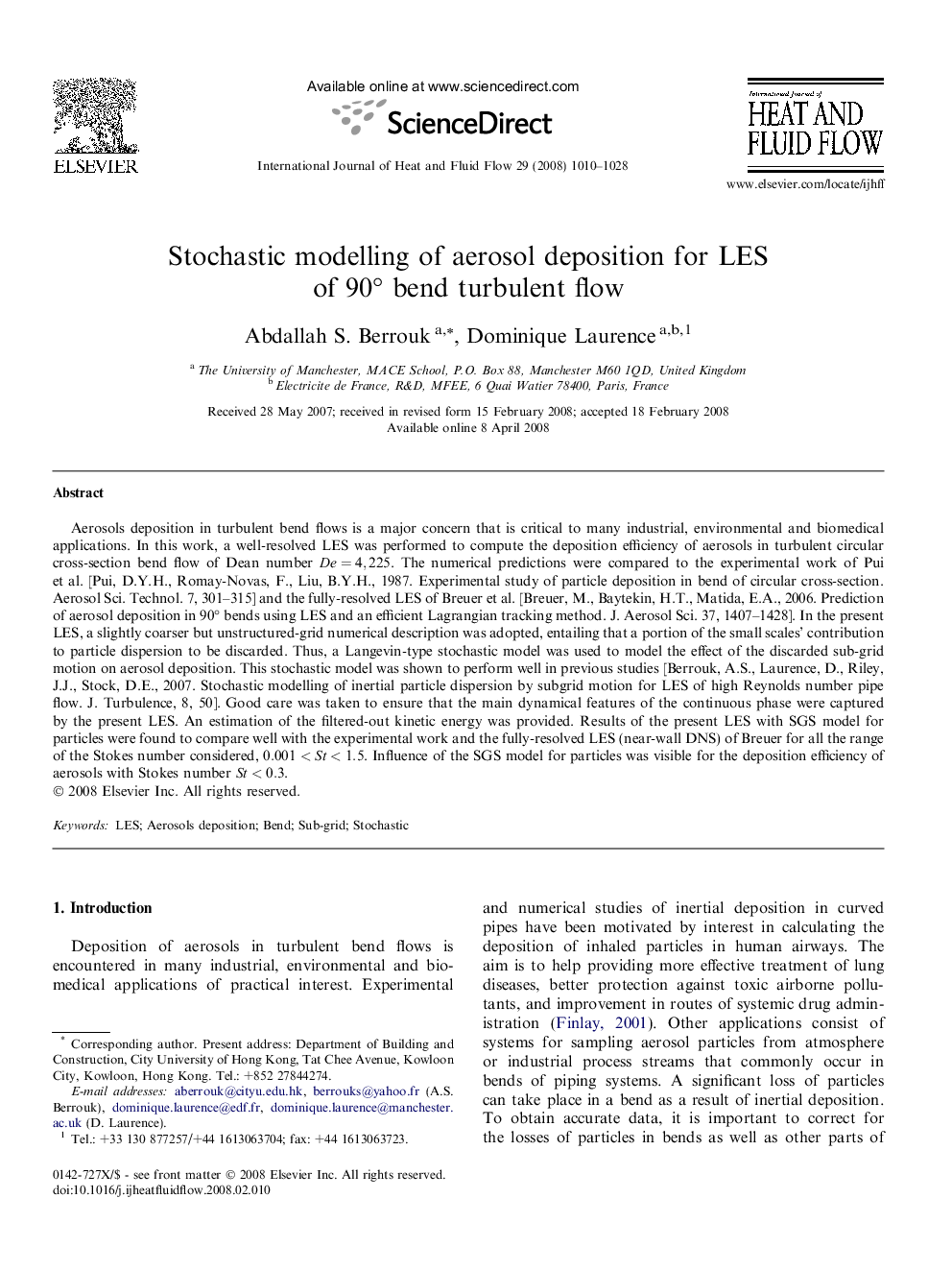| Article ID | Journal | Published Year | Pages | File Type |
|---|---|---|---|---|
| 655838 | International Journal of Heat and Fluid Flow | 2008 | 19 Pages |
Aerosols deposition in turbulent bend flows is a major concern that is critical to many industrial, environmental and biomedical applications. In this work, a well-resolved LES was performed to compute the deposition efficiency of aerosols in turbulent circular cross-section bend flow of Dean number De=4,225De=4,225. The numerical predictions were compared to the experimental work of Pui et al. [Pui, D.Y.H., Romay-Novas, F., Liu, B.Y.H., 1987. Experimental study of particle deposition in bend of circular cross-section. Aerosol Sci. Technol. 7, 301–315] and the fully-resolved LES of Breuer et al. [Breuer, M., Baytekin, H.T., Matida, E.A., 2006. Prediction of aerosol deposition in 90° bends using LES and an efficient Lagrangian tracking method. J. Aerosol Sci. 37, 1407–1428]. In the present LES, a slightly coarser but unstructured-grid numerical description was adopted, entailing that a portion of the small scales’ contribution to particle dispersion to be discarded. Thus, a Langevin-type stochastic model was used to model the effect of the discarded sub-grid motion on aerosol deposition. This stochastic model was shown to perform well in previous studies [Berrouk, A.S., Laurence, D., Riley, J.J., Stock, D.E., 2007. Stochastic modelling of inertial particle dispersion by subgrid motion for LES of high Reynolds number pipe flow. J. Turbulence, 8, 50]. Good care was taken to ensure that the main dynamical features of the continuous phase were captured by the present LES. An estimation of the filtered-out kinetic energy was provided. Results of the present LES with SGS model for particles were found to compare well with the experimental work and the fully-resolved LES (near-wall DNS) of Breuer for all the range of the Stokes number considered, 0.001
